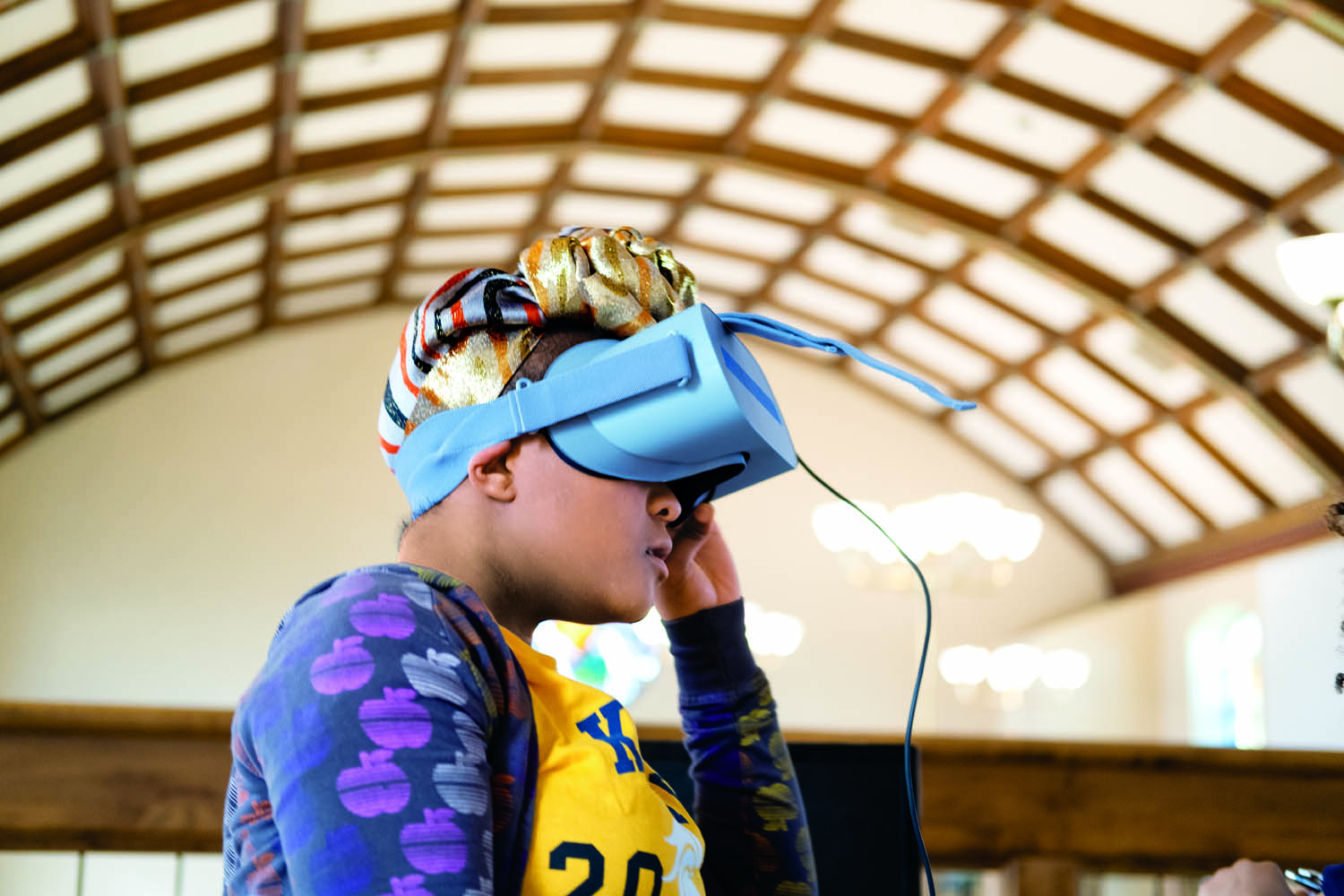For Tamia Murphy, computer science isn’t just about typing endless strings of code and hitting ‘run.’ It’s a gateway to a world of expression, creativity, and unbridled imagination. And she plans to make it her future.
“What I really like about computer science is that it gives me the ability to build anything I choose,” said Tamia, a sophomore at Washington Leadership Academy, an XQ school in Washington, D.C. “It’s a way to be creative without ever being wrong.”
Tamia, like all her classmates at WLA, is immersed in a computer science program that transcends keyboards and textbooks. It encompasses four years of coursework, delving into data science, gaming, artificial intelligence, robotics, web design, coding languages, and art.
But beyond that, WLA students—almost all of whom are people of color and from low-income households—look at technology through a lens of equity and social justice. They study the intersection of technology and public policy, listen to guest speakers, often people of color who work in the tech sector, and learn how tech can strengthen their communities.
In other words, they don’t just learn how to operate computers. They learn how computers influence society.

“The way we teach computer science is not strictly about coding, because coding always changes,” said Jordan Budisantoso, one of WLA’s five computer science teachers. “It’s about how to think about problems. It’s about logic. It’s about gaining an understanding of how technology shapes our world.”
WLA’s approach to computer science has reaped big rewards. On the most recent Advanced Placement computer science principles exam, 24 WLA students passed by scoring a 3 or higher. That represents 32 percent of all the students in Washington, D.C., who scored passing grades. And the only black student in all of D.C. who scored higher than a 3 attends WLA.
Even more impressive, most of WLA’s students who took the exam were 10th graders, compared with juniors and seniors from many other schools.
That’s encouraging news to WLA co-founder and executive director Stacy Kane, who’s made computer science a focal point of the school since it opened in 2016.
“I think this is incredibly exciting,” she said. “It shows we’ve been able to increase access, and achievement, for students of color in computer science—a field where they’ve been disenfranchised for far too long.”
WLA is set to graduate its first class in 2020, with nearly all students planning to go to college, she said. Some are even using their coding skills now, designing websites and doing other tech jobs after school, which not only pay more than typical jobs available to high school students but provide a meaningful experience to list on resumes and college applications.
Indeed, black and Latinx students continue to be underrepresented in the science, technology, engineering and math fields. In 2018, black employees comprised 11 percent of the U.S. workforce overall but only 9 percent of STEM workers, according to the Pew Research Center. Latinx employees made up only 7 percent of STEM workers even though they represent 16 percent of the overall workforce.
In the computer field specifically, only 8 percent of workers are black and 7.5 percent are Latinx, according to the most recent data supplied by the U.S. Bureau of Labor Statistics. Just 26 percent are women.
But beyond the workplace, people of color are disenfranchised from the tech field in other ways, as well, Budisantoso noted. Siri and Alexa don’t register accents as well as native English, facial recognition technology is less accurate in reading people with darker complexions, and popular databases, such as baby name registries, don’t always reflect the cultural spectrum that exists in the U.S.
Those reasons make WLA’s mission even more urgent, Busisantoso said.
“There’s a link between technology and power,” he said. “If we care about making our country a better and more equitable place, we need to make computer science education available to everyone.”
At WLA, students arrive in 9th grade with a range of abilities and experiences. Some are academically advanced and have a clear idea of what they want to accomplish. Others lag several grade levels behind and haven’t learned to type. That’s a challenge for teachers who want to challenge and engage students at whatever level they arrive.
In computer science classes, teachers try to make projects fun and self-paced. In the 9th grade introductory class, for example, students work on simple coding and web design projects but can see the results of their work immediately, Budisantoso said.
Teachers also bring in regular guest speakers, sometimes from tech conferences happening in D.C., and take students on field trips to local tech companies and museums. In 10th, 11th and 12th grades, students work on art and web design and learn how to use technology to analyze everything from crime data to climate change to movie reviews.

Tamia arrived at WLA with a solid background in computer science, thanks in part to her father, who works in information technology for the government. But what she’s learned at WLA has opened her eyes to the breadth of possibilities in the tech field.
Computer science has taught her logic, math, art, and communication, she said. After college, she plans to make tech her career, working as a data analyst for the FBI, she said.
“In computer science, you take abstract ideas and make them real through code,” she said.
“Your ability to be creative is tremendous.”
Want to learn more about Computer Science and education?
Attention teachers and students! Celebrate Computer Science Education Week Dec. 9-16 by learning to code, or teaching your students to code. Whether it’s for an hour or a whole year, Code.org has free lessons available for every grade level and every academic subject, plus ideas to promote computer science education in your school and community.
Not sure where to start? Start at the beginning, by learning about computing pioneer Grace Hopper, who was born Dec. 9, 1906, and to whom Computer Science Education Week is dedicated.
TAGS:



 Tweet
Tweet 



